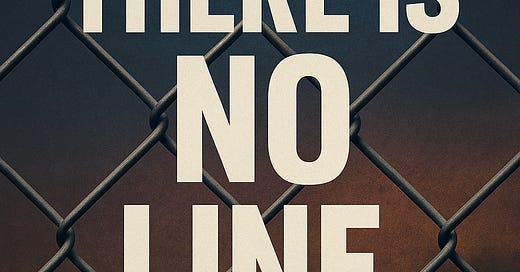CH1 - There Is No Line: The Legal Myth That Keeps the Fear Economy Alive
From Criminal by Design: The Architecture of Harm in U.S. Immigration
Listen to the podcast
Return to the Criminal by Design: The Architecture of Harm in U.S. Immigration Hub
You’ve heard it before—probably said it yourself:
“I have no problem with immigrants. I just think they should come legally. Like everyone else.”
But what if that comforting statement is built on a lie?
For most people seeking safety, work, or family reunification, there is no line to get into. No form to fill out. No number to take. Just a tangle of bureaucracy, backlogs, and barriers designed to frustrate, not facilitate.
“The system isn’t overwhelmed. It was built to say no.”
The Myth of the Line
The idea of a legal immigration line suggests fairness and structure. In reality:
Most immigrants have no pathway unless they have close family, extreme wealth, or rare professional skills.
Asylum seekers must be on U.S. soil to apply, but crossing the border without permission is criminalized—even for those fleeing violence.
Wait times for family visas from some countries exceed 20 years. (Source: American Immigration Council, 2023)
“For a Mexican sibling of a U.S. citizen, the ‘line’ is over two decades long. And that’s assuming no bureaucratic errors or political delays.”
Designed for Denial
The system isn’t broken—it’s obstructive by design:
The U.S. grants fewer permanent residencies per capita than many peer nations.
Quotas from the 1960s still govern visa allocations, failing to account for today’s migration realities.
Immigrants are often told to wait in their home countries—even when that wait may cost them their lives.
"In 2022, the U.S. denied over 75% of asylum applications despite clear evidence of persecution." (Source: TRAC Immigration)
“We don’t just close the door. We gaslight people into thinking there’s a door they just haven’t found yet.”
THX Breakdown — The Harm of the Line Lie
Utilities distorted:
Clarity: People believe the system is fair because it’s called legal
Access: Blocked with invisible, shifting criteria
Closure: Cases stretch for decades—or are denied with no recourse
Value: Reduced to productivity and profit potential
PERMAH consequences:
Achievement: People cannot progress despite effort and compliance
Meaning: Dreams of family, freedom, or stability are crushed
Health: The mental toll of waiting, uncertainty, and rejection is profound
Admiration Equation failure:
Skill: Erased in favor of red tape
Goodness: Disregarded by quotas and bans
Awe: Replaced with disbelief at cruelty
Gratitude: Blocked by policies that demand compliance but offer no resolution
“If legality is impossible, illegality becomes inevitable. And the system knows it.”
Final Reflection and Challenge
The next time someone tells you there’s a right way to come here, ask them to describe it.
Then show them this post.
Because the myth of the line doesn’t just enable cruelty—it sustains the fear economy. It gives cover to those who profit off brokenness, and lets the rest of us look away.
“It’s not just that the line doesn’t exist. It’s that pretending it does allows the harm to continue.”
Call to Action: Share this. Especially with people who believe in fairness. Because once they understand how the system really works—they might be ready to help change it.
NEXT - CH2: This Isn’t About Safety
The Threat Narrative That Endangers Everyone
Fear sells. But it also destroys lives.




